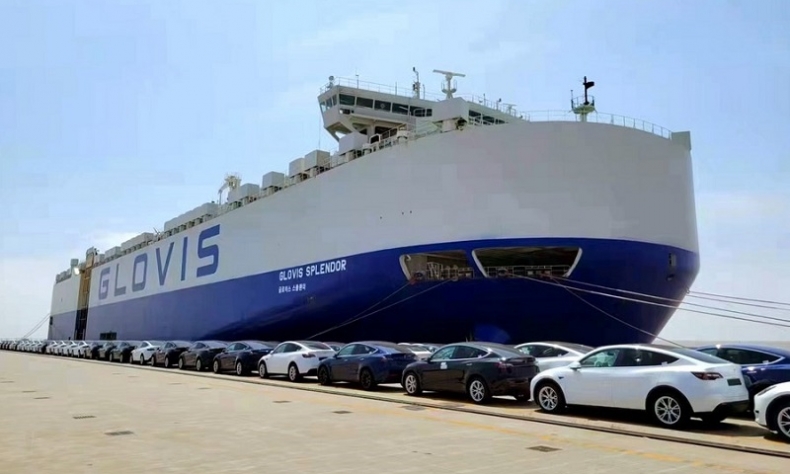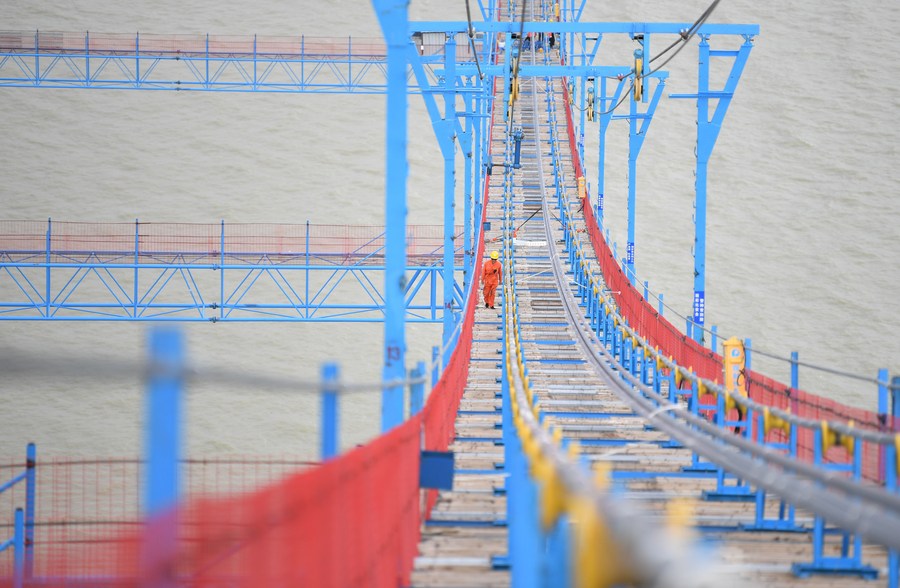Gearing Up and Powering Forward

More efforts will be made to open up wider, and more support will be extended to stabilize foreign trade and investment.
Tiding over the shockwaves of months of COVID-19 resurgence across the country, China’s economy is bouncing back, newly-released economic data showed.
China’s value-added industrial output went up 0.7 percent year on year in May, reversing the 2.9 percent decline in April, an uplifting sign that manufacturing activities rebounded. The purchasing managers’ index—a key gauge of manufacturing activity—reached 49.6 in May, up from 47.4 in April. Meanwhile, the country’s foreign trade increased by 9.6 percent year on year to RMB 3.45 trillion in May, which brought the country’s foreign trade volume in the first five months to RMB 16.04 trillion, swelling by 8.3 percent year on year, outperforming the 7.9-percent growth in the January-April period, according to the General Administration of Customs.
Those positive changes came after a slew of policies and measures put in place by different levels of government. The State Council unveiled 33 measures in late May to stabilize the economy, covering policies on investment, consumption, food and energy security, industrial and supply chains, as well as people’s livelihoods. Tax refunds and fee cuts have been implemented, social security contribution payments allowed to be postponed, and industrial and supply chains unchoked. In addition, infrastructure spending has sped up to boost investment.

Local governments have also worked out moves tailored specifically for their region in a bid to reduce COVID-induced impacts on local economy as much as possible. Having emerged from weathering the recent resurgence of the virus, Shanghai decided to expand subsidies for enterprises’ epidemic prevention and disinfection, and to reduce rent, property tax, and urban land use tax for qualified firms. Beijing unveiled the plan to halve the vehicle purchase tax for passenger cars with an engine capacity of 2.0 liters or less, purchased at the VAT-exclusive price of no more than RMB 300,000 between June 1 and December 31 this year, in a bid to revive bulk consumption. In Hainan, a Province vying to become the country’s largest free trade port, RMB 20 million of vouchers have been distributed to spur offshore duty-free shopping, and over RMB 100 million of vouchers issued to shore up the recovery of tourism and the catering sector.
Observers noted that these growth-boosting measures are not just geared for immediate economic gains, but will also benefit long-term development.
In order to further enhance effective investment and boost consumption and employment, China will step up efforts to encourage private investment according to a State Council executive meeting chaired by Premier Li Keqiang on June 15. China will also launch initiatives to end unnecessary charges levied on businesses, and postpone payments for governmental administrative charges.
Thanks to a raft of measures that have been taken to keep the job market stable, China has helped 1.96 million jobless people return to the workforce in the first five months of the year, according to Li Zhong, vice minister of Human Resources and Social Security. The country has also paid out RMB 33.4 billion in insurance benefits to 5.6 million unemployed people in the first five months as China extends policies to expand the coverage of unemployment insurance throughout this year, the vice minister indicated.

Stable foreign trade and investment was emphasized by Premier Li Keqiang at the State Council Executive Meeting on June 8. Noting that the Chinese economy is now deeply integrated into the world, Li stressed that all the measures to ensure stable foreign trade and investment must hit the ground running without delay. According to the meeting, more efforts will be made to open up wider, and more support will be extended to stabilize foreign trade and investment. As regards to specific measures, efficiency of port loading, unloading, transshipment, and customs clearance will be enhanced; temporary reduction or exemption of port-related charges will also be explored.
Foreign investors have shown their confidence in the prospect of China’s economy. German company Merck Group announced in May that it would invest in building an advanced semiconductor integrated base, including a manufacturing base, a warehouse, and an operation center in the city of Zhangjiagang, east China’s Jiangsu Province. The move comes as part of Merck’s plan to double its investment in China to expand its electronics business by spending over RMB 1 billion by 2025, according to a Xinhua report.
“Global investors are returning to China’s stock markets,” the U.K.-based newspaper Financial Times reported in an article published on June 3. China expanded access to its onshore bond markets in May, providing offshore investors with a way into renminbi debt through Hong Kong’s Bond Connect program. “This opening-up is supportive for long-term asset allocation to China,” Jenny Zeng, co-head of Asia-Pacific fixed income at AllianceBernstein, was quoted as saying in the article.
In the mid-year “618” shopping spree, China’s e-commerce giant JD.com set a new sales record of RMB 379.3 billion. “Overall, we are confident that the appetite for consumption in China remains strong,” said Sharry Wu, Greater China consulting business transformation leader of the U.K.-based professional service-provider Ernst & Young Global Limited , in an article published by the American business news channel CNBC on June 16. “As cities reopen, we should expect a huge boost in online consumption,” Wu indicated.
The country’s efforts to coordinate dynamic COVID control with economic and social development are paying off.
 Facebook
Facebook
 Twitter
Twitter
 Linkedin
Linkedin
 Google +
Google +










